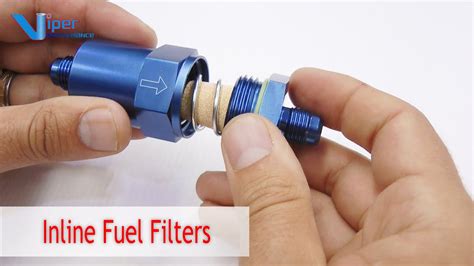10-Inch Inline Fuel Filter: Easy DIY Instructions
Replacing your vehicle's fuel filter is a crucial part of regular maintenance. A clogged fuel filter can lead to decreased fuel efficiency, engine hesitation, and even engine failure. While many mechanics charge a hefty fee for this seemingly simple task, replacing a 10-inch inline fuel filter is a manageable DIY project for most car enthusiasts. This guide provides clear, step-by-step instructions to help you complete this task safely and effectively.
Before You Begin:
Before diving in, ensure you have the following:
- New 10-inch inline fuel filter: Make sure it's the correct type and size for your vehicle. Double-check the specifications on your old filter or consult your vehicle's owner's manual.
- Wrench(es): You'll likely need wrenches to loosen and tighten fuel line connections. The size will depend on your vehicle.
- Socket Set: A socket set is helpful for accessing hard-to-reach bolts or clamps.
- Rags or Shop Towels: Fuel is messy, so have plenty of absorbent material on hand to clean up any spills.
- Gloves: Protect your hands from fuel and potential abrasions.
- Safety Glasses: Protect your eyes from fuel splashes.
- Container: A container to collect any fuel that may drain from the lines.
- Vehicle Owner's Manual: Consult this for specific instructions relevant to your vehicle's fuel system.
Safety First:
- Always work in a well-ventilated area. Fuel fumes are highly flammable and potentially hazardous to your health.
- Never smoke or work near an open flame.
- Disconnect the negative terminal of your battery before starting any work on the fuel system. This helps prevent sparks that could ignite fuel vapors.
Step-by-Step Instructions for Replacing a 10-Inch Inline Fuel Filter:
These instructions are general guidelines. Specific procedures may vary slightly depending on your vehicle's make and model. Always consult your owner's manual for model-specific details.
1. Locate the Fuel Filter:
The location of your fuel filter varies by vehicle. It's often found near the fuel tank or along the fuel line, sometimes under the vehicle. Consult your owner's manual to pinpoint its exact location.
2. Prepare for the Replacement:
- Place your container beneath the fuel filter to catch any spilled fuel.
- Loosen the fuel line connections using the appropriate wrenches. Proceed slowly to avoid damaging the lines.
3. Remove the Old Fuel Filter:
Carefully disconnect the fuel lines from the old filter. You may need to use pliers or a specialized tool for some fuel line connections (e.g., quick-connect fittings). Be prepared for a small amount of fuel to spill.
4. Install the New Fuel Filter:
Carefully install the new 10-inch inline fuel filter, ensuring that the fuel flow direction arrows on the filter match the direction of fuel flow in the fuel line. Tighten the fuel line connections securely.
5. Reconnect the Fuel Lines:
Reconnect the fuel lines to the new filter, ensuring tight and secure connections.
6. Check for Leaks:
Carefully inspect all connections for leaks. Tighten any loose connections as needed.
7. Reconnect the Battery:
Reconnect the negative battery terminal.
8. Start the Engine:
Start the engine and check for any leaks or unusual noises. Let the engine run for a few minutes to allow the new filter to prime.
Frequently Asked Questions (FAQ):
How Often Should I Replace My Fuel Filter?
The recommended replacement interval for a fuel filter varies depending on the vehicle and driving conditions. Check your owner's manual for the manufacturer's recommendation. Generally, it's advisable to replace it every 30,000 to 60,000 miles or as needed. If you notice decreased fuel economy or engine performance issues, it might be time for a replacement.
What Happens if I Don't Replace My Fuel Filter?
A clogged fuel filter restricts fuel flow to the engine, leading to decreased performance, reduced fuel efficiency, rough idling, engine stalling, and ultimately, engine damage.
Can I Use a Different Size Fuel Filter?
No. Using an incorrectly sized filter can cause problems with fuel flow and damage your engine. Always use a filter that's specifically designed for your vehicle.
What if I Spill Fuel During the Replacement Process?
Carefully clean up any spilled fuel immediately with absorbent rags or towels. Ensure the area is well-ventilated to avoid the risk of fire.
Can I do this myself, or should I take it to a mechanic?
While this is a DIY-able task for many, if you are uncomfortable working with fuel lines or have limited mechanical experience, it's best to take your vehicle to a qualified mechanic.
This guide aims to provide a clear and comprehensive approach to replacing a 10-inch inline fuel filter. Remember, safety is paramount. If you're unsure about any step, consult a qualified mechanic. By following these steps carefully, you can save money and gain valuable automotive maintenance experience.

